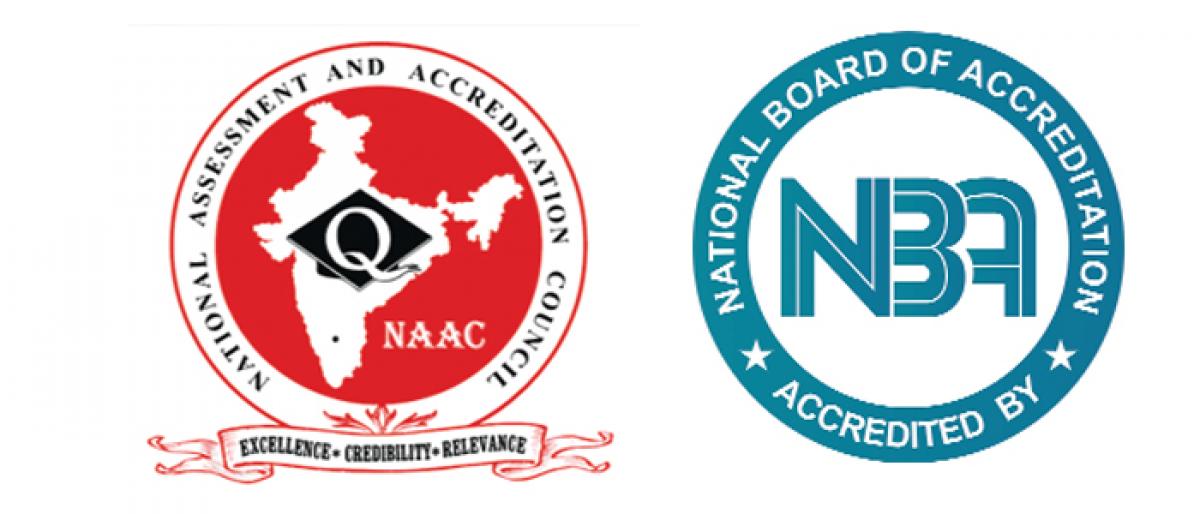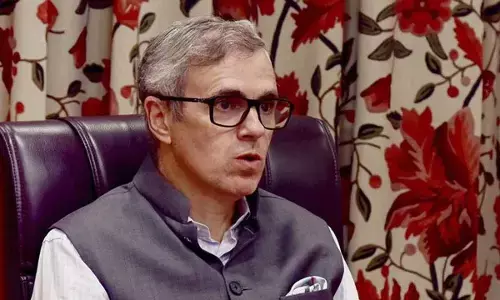The Changing Dynamics

As of now, there are two national bodies carrying out the job of accreditation of Higher Educational Institutions HEIs of India, viz National Assessment and Accreditation Council NAAC located at Bangalore and the National Board of Accreditation NBA operating from New Delhi While the first of the two was established as a private society in 1988, it got affiliated later as an Inter Universi
As of now, there are two national bodies carrying out the job of accreditation of Higher Educational Institutions (HEIs) of India, viz. National Assessment and Accreditation Council (NAAC) located at Bangalore and the National Board of Accreditation (NBA) operating from New Delhi. While the first of the two was established as a private society in 1988, it got affiliated later as an Inter University Council of the University Grants Commission (UGC) in 1994.
Since then, NAAC started functioning as an Autonomous Institution, being entrusted with the duty of Accreditation. Whereas the National Board of Accreditation (NBA) was promoted by the All India Council of Technical Education (AICTE) under Section 10(U) of the AICTE Act in 1994. It became an independent Autonomous Body with effect from 7th January, 2010 and started assisting and accrediting HEIs offering Technical Courses, which included Engineering, Management, Architecture, Pharmacy and Hospitality.
It is at this juncture, the University Grants Commission has decided to allow more accreditation Agencies to operate in this field of activity. Consequently, it has issued UGC (Recognition and monitoring of Assessment & Accreditation Agencies) Regulations, 2018 aimed at enhancing the existing capacity of accreditation for meeting the requirements of HEIs.
The Regulations seek to allow setting up of Accrediting Agencies by the Government or Semi-Government Agencies; whereas the existing two bodies viz. NAAC and NBA continue to be engaged on the job. In line with these regulations, the Union Minister for Human Resources Development has announced that the Government is considering to create an agency with IITs and IIMs to be the new outfit to speed up the accreditation process.
The regulations also seek to set up an Accreditation Advisory Council (AAC) to advise the UGC on the measures to be taken by the Commission to develop and regulate the process of assessment and accreditation and regulate the functioning of Assessment and Accreditation Agencies (AAAs).
While it is laudable that the government is making an open thinking about the ongoing accreditation process and wants a few more players to take up the job; there are certain crucial issues that need to be looked into.
At the outset, the idea of accreditation has not become popular among HEIs in India. Of the 867 Universities and 51674 Colleges (including standalone Institutions) those that got accredited are only about 547 (63.1%) in case of Universities and 11479 (22.2%) in case of Colleges. The UGC, way back on January 19, 2013 made accreditation mandatory. Accordingly, all those institutions that have been in existence for over six years or that have turned out two batches of students become eligible to opt for accreditation from NAAC. In spite of all this, vast majority of the HEIs are not coming forward.
The UGC directive is being taken as advisory and not as the stipulation. Neither the Commission, nor affiliating Universities are paying any attention in the matter. Situation has reached a stage where notices are required to be served to those Institutions that are not taking measures in this regard. Only then, there will be a clean- up drive of the institutions that are sagging the quality in higher education.
Secondly, in the context of multiple institutions carrying out the task of accreditation, there are the issues of methodology. It is a fact that the parameters employed for assessment are at variance. In such a case, the interpretation of the result (Grade) turns out to be an issue. HEIs would prefer to volunteer for assessment from such agency whose criteria is liberal and less stringent.
The Ministry is required to examine this issue in greater detail and to take measures to standardize the procedure to the extent possible. As of now, there is utter confusion among with educators and general public of these grades. For, an institution functioning as technical institution is opting for assessment both from NBA and NAAC. Establishing equivalency among the grades is an issue.
There is also the question that should the Institutions of this nature mandatorily opt for both the assessments? If there is going to be third or a fourth agency to be set up, then do they also to tap the doors of the new agency?
The question is about how many assessments that one institution shall opt for? As of now many an institution are getting accredited from NAAC and NBA. It is likely that the institutional rating with these two agencies may be at variance. In such a case, the institution always publicises the better one whereas the stakeholders look at the grades with suspicion. This confusion needs to be avoided. The likely solution could be to establish equivalency among ratings and scores.
Thirdly, there is the problem of insistence of assessment by a specific agency. As at present, engineering colleges are directed to opt for NBA Accreditation. Only then they are being considered for new courses and variation in intake. In such a case, the need for opting NAAC Assessment need to be clarified. In the event of another agency also being pressed into service, where shall the HEIs go for? Therefore it is high time that the Ministry shall provide the necessary clarity in these issues.
As a matter of fact, rating is the much contested issue in the stock markets. Financial instruments such as Shares, Bonds, Commercial paper are rated by credit rating agencies like ICRA, CRISIL, CARE, etc. There is the practice of rating the quality of currencies and performance of nations for deciding on the credit worthiness.
For instance, Moody’s has upgraded India’s rating from the lowest investment grade Baa3 to Baa2 and changed the outlook from stable to positive. Whereas S&P kept India’s rating at the same lowest investment grade of BBB, citing a sizeable fiscal deficit, high general government debt and low per capita income. It is nothing but natural that the rating & would vary based on the differing methodology, outlook and perception. In the same way, grades being given by the Accrediting agencies may also be at variance. Unless, there is clarity provided in this regard, multiple agencies only add to the confusion and chaos.
(Prof K Viyyanna Rao - The author is a former VC, ANU and presently Director, SEA Group of Institutions, Bangalore)















